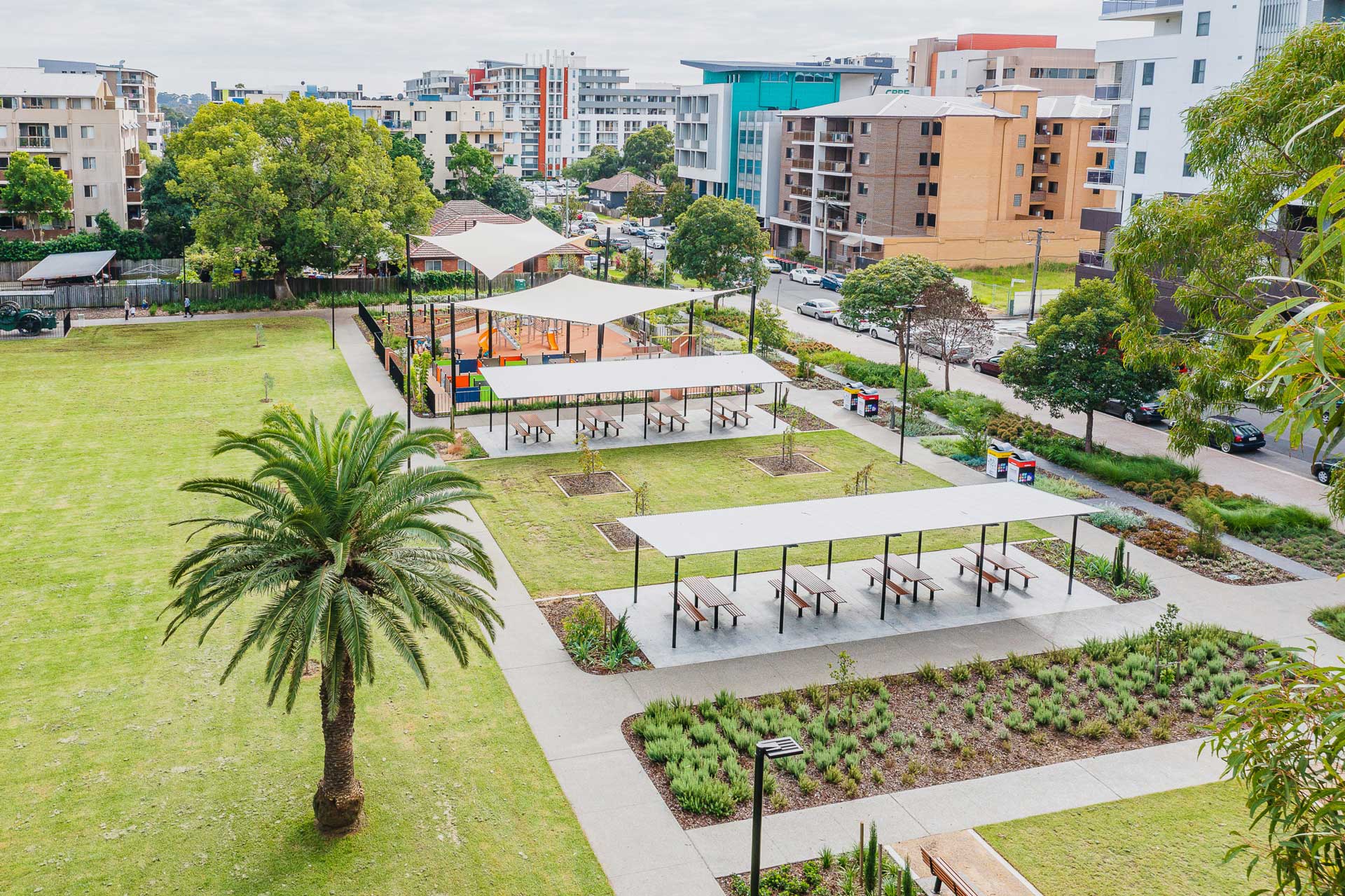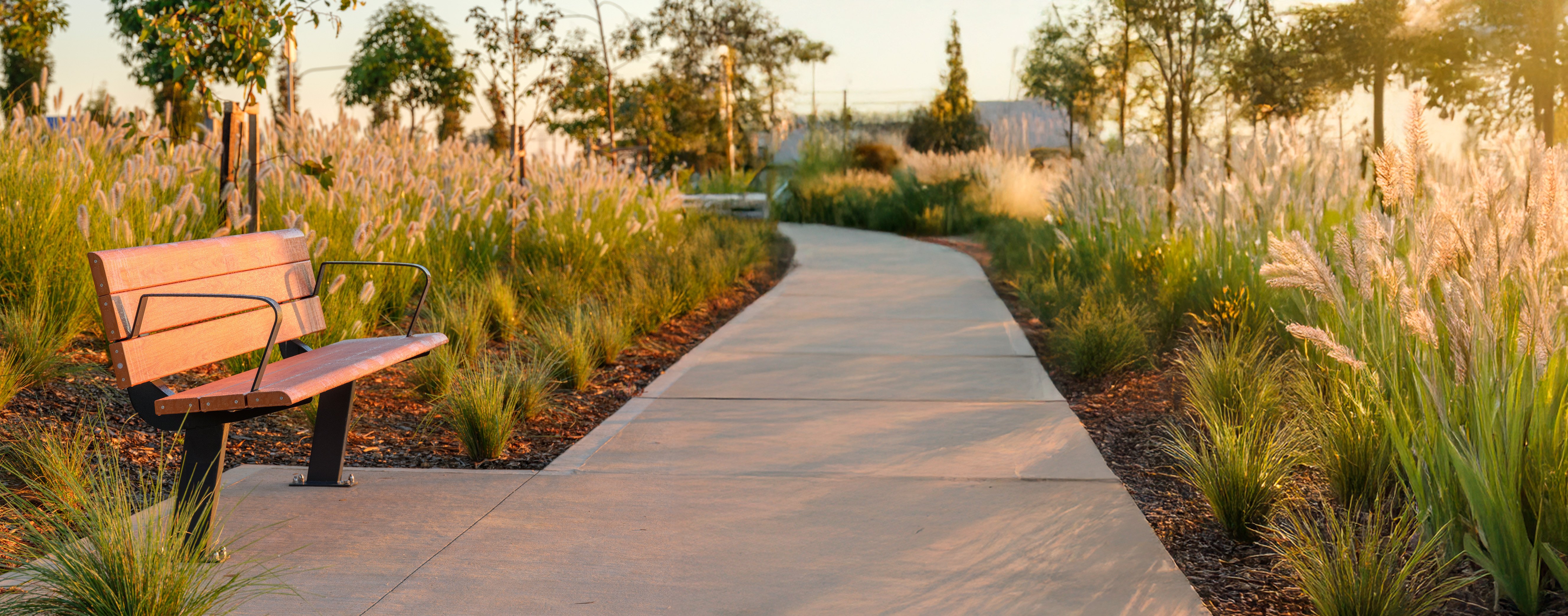September 7, 2021
Across Australia, councils are increasingly required to incorporate shade into public parks - not just as an amenity, but as a legislated element of public health planning.
These evolving mandates are backed by research. For example, a Cancer Institute NSW audit found that 1 in 5 playgrounds had no shade at all, despite guidelines recommending at least 70% coverage across seating and play areas.
For designers and contractors, this shift raises practical questions: How do you deliver compliant shade in real-world conditions? How do you balance structural footprint, layout flexibility, and user comfort? In this article, we will explore:
- The latest and most popular research affecting how Councils are rethinking park spaces.
- What current legislation and council requirements are for shade coverage in public spaces.
- Product solutions for shade in complex or large spaces.
- How to approach shade placement based on research and behavioural insights.
Why Shade Matters: How Research Influences Legislation
Heat exposure in park spaces doesn't just affect its usability - it’s a public health risk. More councils are taking legislative and planning cues from documents like:
-
The 2025 Ultraviolet radiation (UVR) exposure in playgrounds: an Australian case study.
-
QUT's Shade and Age-Friendly Outdoor Spaces - a handy guide funded by the Queensland Government.
When considering the usability of park spaces, this research shows thermal comfort is a key factor in how long people stay in parks, especially among older adults, children, and low activity (passive) users.
The 2021 Cancer Council NSW Audit Summary reported that: 43% of surveyed park users preferred to sit in shaded areas over open or sunlit spots. Shade was more influential in encouraging use than even aesthetics or equipment availability.
This lines up with findings from insights from focus groups with park users and specifiers: Shade is one of the top three design elements influencing both how often people use a space and how long they stay.
Legislation & Policy: A Shift Toward Measurable Shade Standards
Over the past five years, councils and state governments have moved beyond general recommendations and are now introducing formalised, measurable shade requirements within planning frameworks, funding criteria, and urban design policy.
In Victoria, for example, schools and community spaces applying for shade grants must now demonstrate how proposed structures meet specific UV protection criteria. In Queensland, the Technical Shade Guidelines for Public Facilities outline not only target coverage areas but also differentiate between essential and preferred shade levels based on use type.
Meanwhile, New South Wales' updated Skin Cancer Prevention Strategy 2023–2030 formalised access to quality shade as a key objective, supported by tools like the NSW Shade Planning Guidelines and the growing influence of the ShadeSmart program, which is educating designers and planners on how to deliver effective UV protection through spatial and material choices.
For urban planners, the shift is not about changing priorities - but about responding to a higher level of legislative scrutiny. Designers are being required to show not just where shade is provided, but why, based on user behaviour, peak UV times, and priority zones like seating or passive use areas.
From Obligation to Opportunity: How Shade Can Add Value
Incorporating shade into public spaces presents significant challenges- particularly when permanent structures must perform reliably in harsh environments or adapt to irregular site conditions. Designers often face tough decisions balancing durability against flexibility, especially in coastal areas or locations prone to hail and severe storms. Fabric shades, while common, fall short in longevity and resilience.
Fortunately, advances in product design have responded to these demands. Here are two shelters that are research-backed solutions developed to address the core challenges of integrating effective, permanent shade - transforming compliance requirements into opportunities for enhanced user experience and placemaking.
Product Spotlight: Red Gum
The Red Gum Shelter was developed in response to client feedback seeking shade structures with larger shade coverage and maximised usable footprint, allowing for more furniture configurations and flexible, unobstructed use of space underneath.
Why Red Gum Works:
-
Post placement creates larger span capabilities, which means greater flexibility underneath for furniture layout, accessibility, and user flow.
-
Available in semi-custom sizing, pitch, and post configurations, offering councils more control over fit and visual integration.
-
Optional laser-cut screening, signage, and branding panels make it easy to reflect community identity.
Product Spotlight: Pandanus™
Pandanus™ was designed to address the challenge of providing permanent, scalable shade in large or irregular park spaces - where fixed-size shelters often struggle to fit or adapt. Its modular panels make it easy to tailor coverage, maintain durability in harsh environments, and create engaging shade patterns that enhance the user experience.
Why Pandanus™ Works:
- Modular roof design enables unlimited configurations and layouts.
- Made from high-grade aluminium and corrosion-resistant stainless steel.
- Supports partial refurbishment to extend lifespan without full replacement.
- Semi-customisable laser-cut panels provide unique shadow patterns and design options.
Final Thought
Ongoing research will continue to reveal new insights that shape how we design shade in public spaces. Backed by evidence and driven by innovation, street and park furniture like the Red Gum Shelter and Pandanus™ help designers balance compliance, durability, and placemaking - bringing design vision to life while creating comfortable, lasting community spaces.
Choosing solutions based on what works best turns legislative requirements into opportunities for meaningful, user-focused design.
Want to see how quickly these park shelters can be installed on site? Watch our quick installation video by clicking the button below and discover how efficiency meets quality in every project.


.jpg?width=341&height=227&name=PJI%20St%20Bedes%20College%20Newcastle%20NSW%20(13).jpg)
.jpg?width=341&height=255&name=PI%20Pandanus%20JPEG%20(3).jpg)


 Back to News
Back to News 



